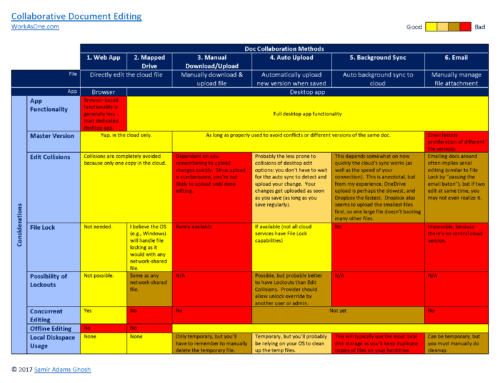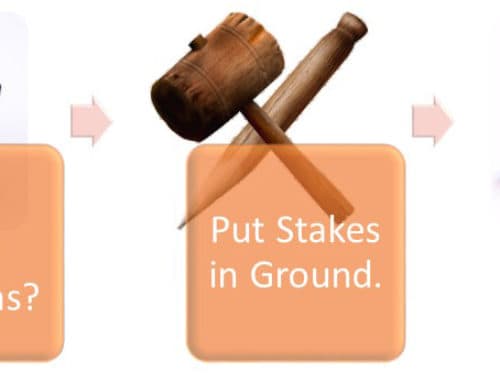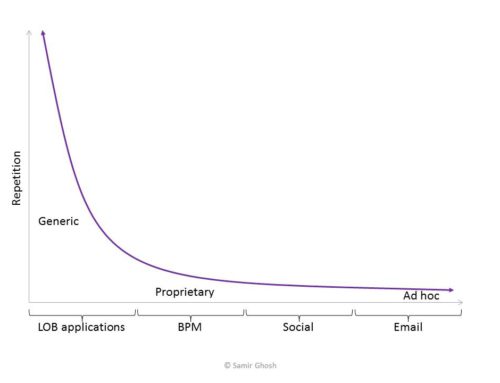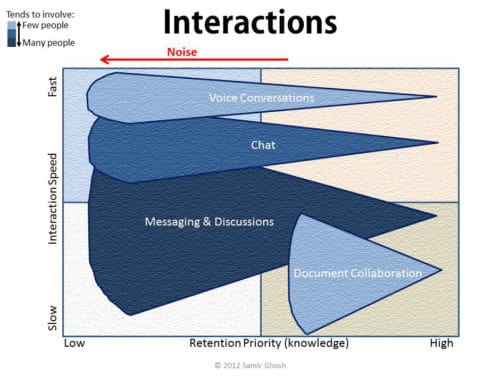For decades, CRM (primarily used for SFA) has been “that critical application that really is not used.” This is because CRM is typically top-down driven, but bottom-up resisted. Executives want a better understanding of how sales is doing, but sales people do not want additional tasks that only take time away from earning their commissions.
After decades of technology product and customer application implementation experience, I have learned some immutable lessons, one of which is – top-down driven initiatives that are perceived as detrimental to the users (e.g., more work) fail to meet their objectives.
First, benefits at the bottom
Social-enabled (see “‘Social’ in Business: Disambiguation“) CRM, for the first time, solves this very simply by providing tangible benefits to the sales people. Order taking is easy, but big commissions are paid on the complex sales. These complex sales can rarely be closed alone. They invariably require “team selling” (an overused term). How is that predominantly done today? Via Email. The sales person emails marketing for materials, product management for future product plans, customer service for technical problem resolution, and her boss for updates. People who the sales person did not realize may be able to help will never see these emails. Emailed solutions are not easily available for future reference nor discoverable by other colleagues who might benefit from the information.
Email is used to handle these exception workflows because email is flexible in two key dimensions:
1. Content: You can write long or short messages, embed images, attach files, respond, forward, etc.
2. People: You can send emails to virtually anyone, spanning geographies, organizations even outside of the company. And you can include this mixture or people, or virtual team in the same thread.
Social capabilities must provide these capabilities while mimicking familiar the user experiences of email or social messaging, where email is embedded in the application (like Facebook).
In business, however, email is missing this third component – embedded in the application. That’s where the “Contextual Collaboration” (as coined by Matt Cain of Gartner in 2005) comes in. Instead of using a detached email application for collaboration, social contextual collaboration provides these email-like capabilities from right within the application, which delivers benefits such as convenience, easy future reference, discovery by broader audiences.
Then, greater benefits at the top
Once CRM is actually used as the primary vehicle for sales enablement, the benefits then come to the management because the information is more complete and current (the opposite of “garbage in, garbage out”). This alone easily justifies Contextual Social CRM.
However, Contextual Social CRM delivers other key advantages to management.
Notifications
Instead of conjuring up and perusing daily sales reports, management can define triggers important to them and automatically receive notifications of noteworthy events – e.g., when a new lead is entered in a certain territory, or when the status of a large opportunity changes. No more inefficient “polling” for important events.
Browse
Once internal collaboration about an account can be pinned to that account record, it is very easy to catch up on what is currently going on at that account. For example, before a client meeting, a manager can review the collaboration activity for that account. To get the status of a large opportunity, the manage does not have to hunt down the relevant sales person, who then refers them to someone else in the critical path. The manager can instantly see the latest correspondence about the opportunity, whether that was internally, with a partner or the customer themselves.
Social technology (see “What Is Social“) is not a fad. And Contextual Collaboration is key for business users. Combined with CRM, Contextual Social CRM brings tangible bottom line results to the innovative business.







This is something i have been wondering about for years … the focus on the sales team with CRM. The C seems to be missing as CRM becomes more and more of a SFA tool.
More benefits to be got from enabling customers to be able to connect with the organization?